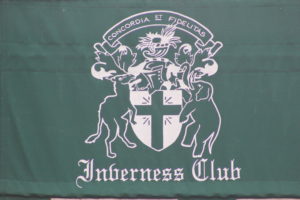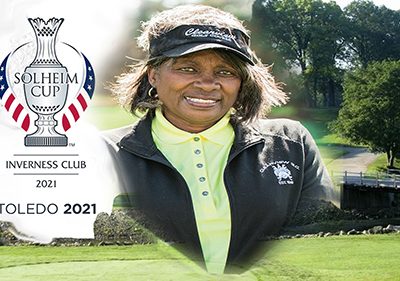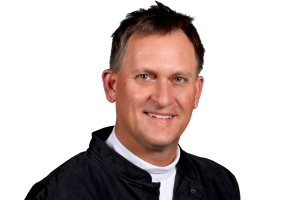The Inverness Club has been the site of four U.S. Opens and two PGA Championships. Legendary names such as, Ted Ray, Dick Mayer, Billy Burke, Hale Irwin, Bob Tway and Paul Azinger all hoisted major trophies at Inverness.
Ray beat Harry Vardon in 1920 and the great Bobby Jones played in his first U.S. Open at Inverness that same year. Ohio’s own Jack Nicklaus made his inaugural U.S. Open appearance in 1957 here.
However, the last major championship was held 24 years ago, completely missing the Tiger Woods era.
More recently two U.S. Senior Opens, 2003 and 2011 have been held in Toledo, but the USGA and the PGA of America have not been interested in awarding a new championship to the current configuration of the golf course.
Something had to be done to attract a major golf tournament to one of the most iconic golf courses in the country. 
When the current Head Professional at Inverness, Derek Brody arrived in Toledo five years ago, he felt a “Master Plan” needed to be created to accomplish the work necessary to bring the historic Donald Ross course up to date.
As all of us get older, we need to update, occasionally. That was the case with Inverness.
Brody along with, club President, Steve Mitchell, General Manager, Joe Furko and the Greens Superintendent, Chad Mark created a list of items that needed to be addressed to make Inverness relevant in today’s Hi-Tech golf world. They also laid out a systemized attack to solve these problems.
The first step was the total reseeding of the course a few years ago. Most of the grass that was on Inverness was the original seeding from over 100 years ago. It had to be replaced with newer more hardy and playable grasses.
When Mark left Inverness in February, to take the same position at Muirfield Village, Inverness hired, John Zimmers, one of the most respected superintendents in the country.
Zimmers had spent 18 years at Oakmont and has extensive experience preparing golf courses for USGA championships. He oversaw Oakmont for both the 2007 and 2016 U.S. Opens, plus the 2010 U.S. Women’s Open and 2003 U.S. Amateur.
When Inverness began the search for the right person to take on the solemn duty of, maintaining the Ross legacy, but renovating the course to accommodate today’s 350-yard drives and modern technology, one interview stood out from the others.
Andrew Green is a relatively new name in a deep field of golf course architects that includes, Tom Doak, Gil Hanse, the team of Bill Coore & Ben Crenshaw, Tom Fazio and more. How could he compete against the big boys?
Green has paid his dues in the golf design industry. He worked for 14 years digging in the dirt and becoming a lead designer for McDonald & Sons, one of the foremost golf course design and construction firms in the world. He recently completed a renovation of Oak Hill in Rochester, New York that has received rave reviews among golf purists. Oak Hill is another iconic Ross design created a couple years prior to Inverness.
Plus, he wowed the Inverness committee in his initial interview. He had done his homework, by visiting the USGA Museum and finding original photographs of the course that accurately reflected Ross’ original design. Photos that no one in Toledo had seen or were aware existed. He fully understood what the committee was seeking and had sketches of designs prepared to answer their questions.
In that very first meeting, he impressed Inverness with his knowledge of Ross, as well as, the course and what it would take to bring Inverness into the 21st Century.
The decision was made only last fall to hire Green and what has been accomplished in one short year is amazing.
One of Green’s more interesting ideas that garnered Inverness’ attention was the recreation of four green complexes that had been lost over the years, but were present in the original Ross routing. These new holes also solved a problem of rerouting three of the par-3 holes to help with playability.
One of the complaints about Inverness was that all four of the par-3 holes went the same direction from tee to green. Today designers diversify the par-3 holes by varying the distance, and direction the par-3 holes lie on a course. The intent is to provide options for the golfer, with varying wind directions and required carries into the green. Green has accomplished that with new tees on existing holes and by creating entirely new holes, but still retaining the look and feel of a Ross design.
Another issue was renovation of old bunkers and creation of new ones to catch errant drives and make today’s bombers rethink their options on the tee. Should they swing for the fence and risk a difficult bunker shot or lay up to a safer distance in the fairway? Even though Inverness can now be stretched to 7,700 yards, several holes needed additional bunkering to make it a challenge.
Another problem that needed attention was the smallish size of the greens. Part of Green’s plan included expansion of certain greens to create additional hole locations, which again add playability options for the world’s best players over a four-day tournament. Plus, the additional hole locations force the membership to face new challenges on approach shots.
As you can imagine with a course that originally opened for play in 1904, drainage was an issue on several holes. Old broken tile lines had to be dug up and replaced.
With the “Master Plan” in place and a designer hired, the next question was what portion of the plan and how soon these changes would be undertaken. Plus, the Inverness Club’s membership had to buy in to the proposal, as well as, the cost. They were kept abreast of the “Master Plan” at each step and have fully embraced the entire project.
With the 2019 U.S. Junior Amateur and the 2021 Solheim Cup coming to Inverness, one of the major issues was timing. Changes would need to be done now or wait until 2022. The decision was made to get on with it.
Green began work immediately. The new tees have been completed and the grass is growing. The new holes have been created and are nearing completion. Green expansion and bunkering work is continuing and should be completed yet this fall.
Inverness Club has a proud history and would like to add more historical moments by hosting major championships. The work that the club and Andrew Green has undertaken will help the course meet USGA and PGA requirements to be awarded another major championship.
This is a huge undertaking for Inverness and the membership should be commended for accepting the challenge. Don’t be surprised if we hear an announcement of a major returning to Toledo in the not too distant future.









